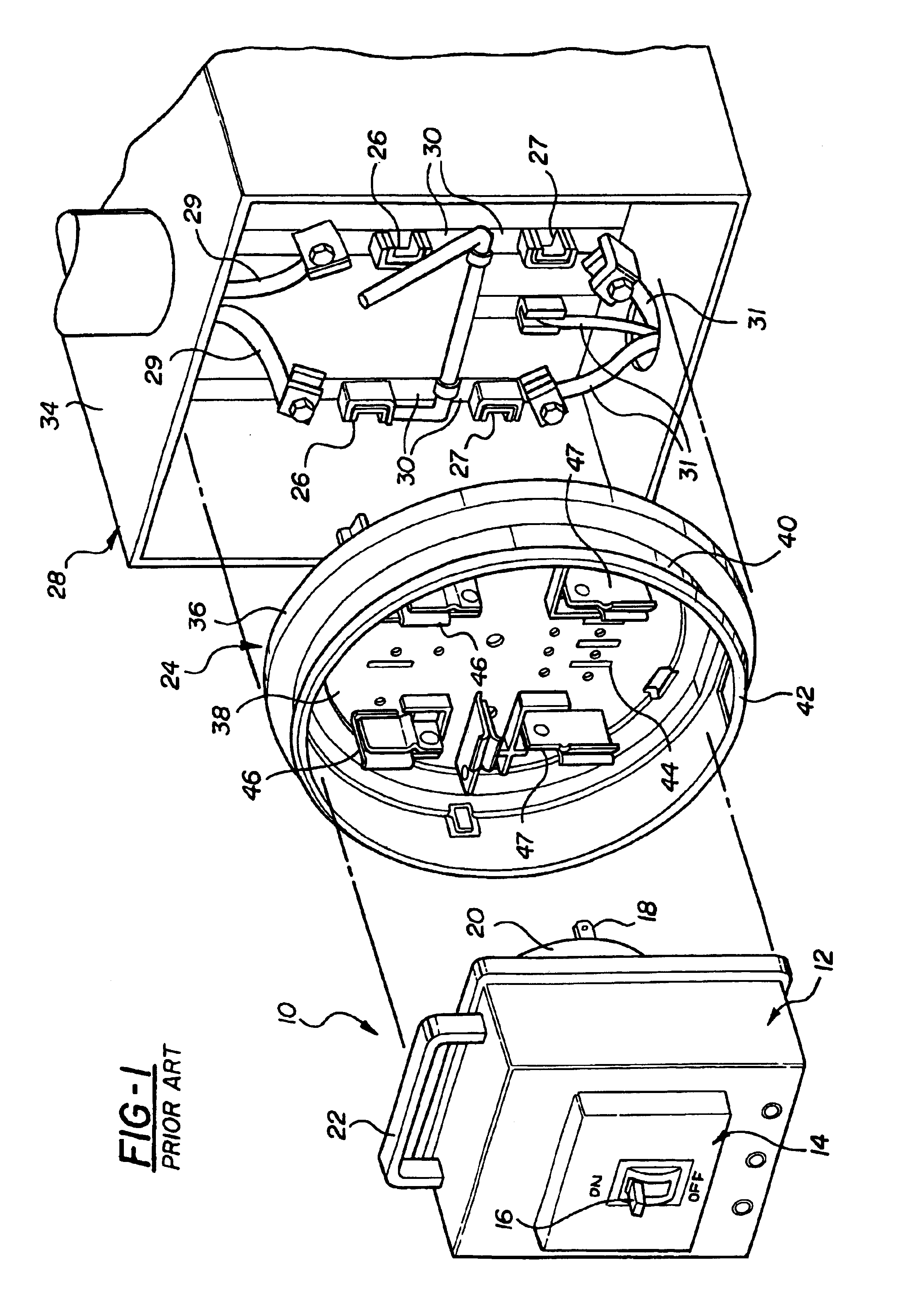Watthour meter socket adapter
a technology of watthour meters and socket adapters, which is applied in the direction of electrical discharge lamps, coupling device connections, instruments, etc., can solve the problems of not always being able to cooperate with switching is not always accessible to the utility service person, and the customer will not usually turn off the power himself, etc., to facilitate the disconnection and reinstallation
- Summary
- Abstract
- Description
- Claims
- Application Information
AI Technical Summary
Benefits of technology
Problems solved by technology
Method used
Image
Examples
Embodiment Construction
For clarity in understanding of the unique features of the disconnect watthour meter socket adapter, a prior art disconnect watthour meter socket adapter is shown in FIG. 1 along with a mounting base and watthour meter socket as described in the background section of this application. The disconnect housing is an Ekstrom Industries, Inc., disconnect watthour meter socket adapter housing, Model No. 1000, SP-3542. In general, the prior art disconnect watthour meter socket adapter 10 shown in FIG. 1 includes a housing 12 having a circuit breaker or disconnect switch 14 mounted therein. The disconnect switch 14 is, for example, a two hundred amp circuit breaker having internal contacts which switch between open and closed positions, depending upon an over-amperage detection circuit built into the disconnect switch 14, as well as the position of a control lever 16 which is movable between a “ON” position corresponding to a closed contact position and a “OFF” position corresponding to an ...
PUM
 Login to View More
Login to View More Abstract
Description
Claims
Application Information
 Login to View More
Login to View More - R&D
- Intellectual Property
- Life Sciences
- Materials
- Tech Scout
- Unparalleled Data Quality
- Higher Quality Content
- 60% Fewer Hallucinations
Browse by: Latest US Patents, China's latest patents, Technical Efficacy Thesaurus, Application Domain, Technology Topic, Popular Technical Reports.
© 2025 PatSnap. All rights reserved.Legal|Privacy policy|Modern Slavery Act Transparency Statement|Sitemap|About US| Contact US: help@patsnap.com



